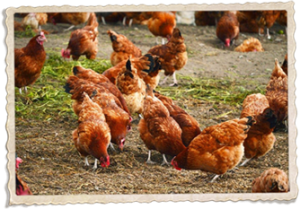For some people, owning one or two chickens in their backyard is all they need to be happy. For others, however, the more the merrier! While you can certainly keep buying hens from Chickens for Backyards, there is a special joy in breeding chickens yourself. Not only will this increase the numbers in your flock, but it will also increase the number of eggs and meat that your flock produces. If you’ve never bred chickens before, however, the task can seem daunting to start on your own. That’s why we’ve put together these few tips to get you started:
Use a broody breed
For backyard chicken raisers who don’t want to breed their chickens, broody hens are the bane of their existence. For those of us who do want to breed our chickens, however, broody hens are exactly what we’re looking for. Some breeds are broodier than others, so you’ll want to select your breed carefully. Buff Orpingtons, for instance, have a high level of broodiness and are an excellent choice for beginner breeders.
Plan for spring
While chickens produce eggs all year-round, the best time for breeding is typically in the spring. This is because chickens spend most of their time trying to stay warm during the wintertime, so there is less time for mating. Your chicks will also have a better chance of surviving in the warm, temperate climate of spring than during a harsh and cold winter.
Be careful of how many roosters you have
This should be self-explanatory, but if you’re going to breed chickens, you’re going to need a rooster. Check, first, to see if your town or local municipality allows roosters (many cities, for instance, do not allow people to own roosters within city limits). Once it’s been established that you can own a rooster, you’ll have to determine how many roosters you’ll need. In most cases, it’s best to only have one rooster, as they can become aggressive towards one another. However, if you’ve raised your roosters together from chick to adulthood, then they’ll be able to coexist much more peacefully. In these instances, you should have enough roosters where each one has 4-5 hens of their own.
Keep your rooster with your hen
When you’ve decided which rooster that you want to breed with which hens, remove all the other roosters except for the one that will breed with your hens. After that, it’s mainly up to the rooster. He will dance for the hens, winning them over, until he eventually mates with them. If your rooster does not end up mating with your hens, then that’s usually a sign of an underlying problem, such as injury, illness, or laziness.
Be patient
Once your roosters start mating with your hens, don’t expect that the next egg your hen lays will be fertilized. Instead, it’s mainly a waiting game, as it will take at least 2 weeks for hens to start laying fertilized eggs. Once that 2-week mark has passed, you can start to check your eggs by looking for small, white splotches similar to a bullseye. As more time passes, you’ll notice red plots and veining.
Let your hen do the work
After that, there’s not much else work to be done. Your hen will take care of the rest, lying on her eggs and keeping them warm as the chicks grow inside. All you have to do is make sure that she has enough food and water nearby until the chicks finally hatch.
For further questions on how to breed and raise backyard chickens, contact Chickens for Backyards today either online or by phone at 888-412-6715.

